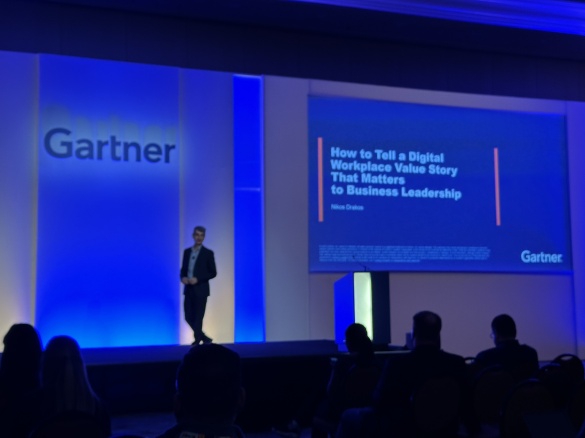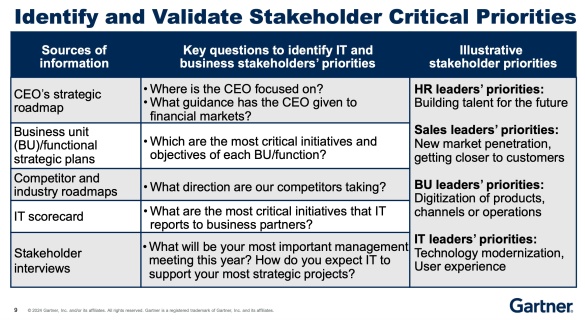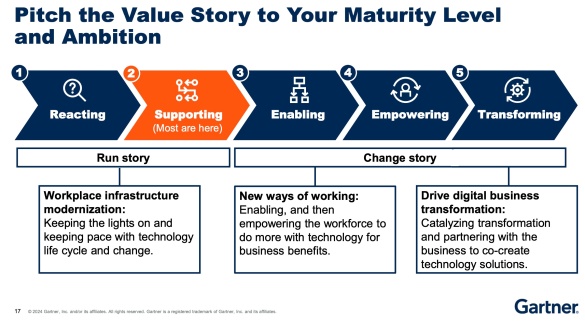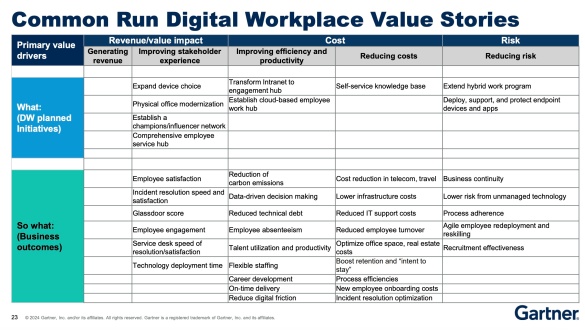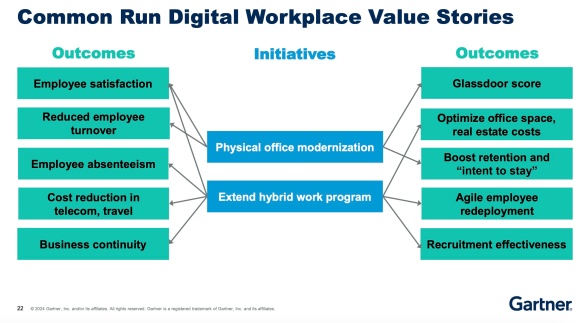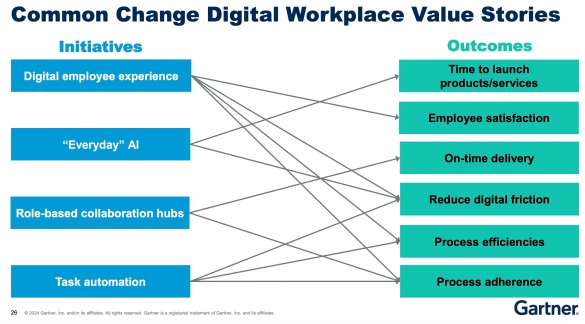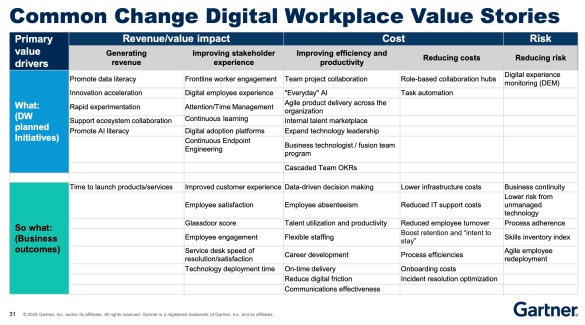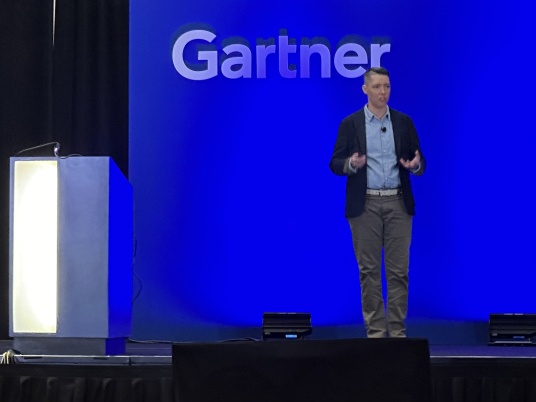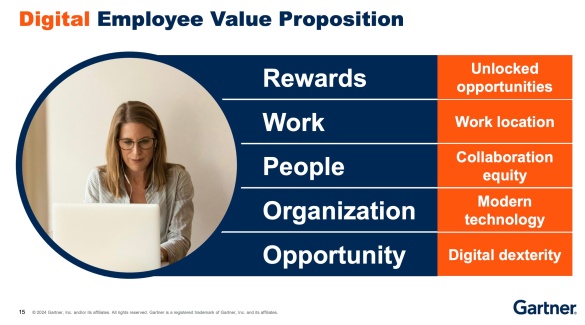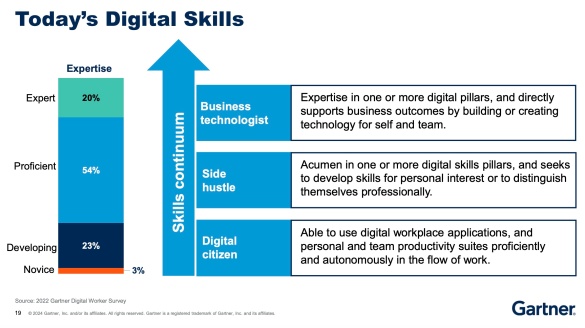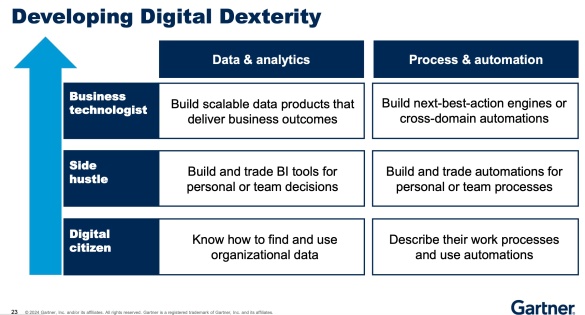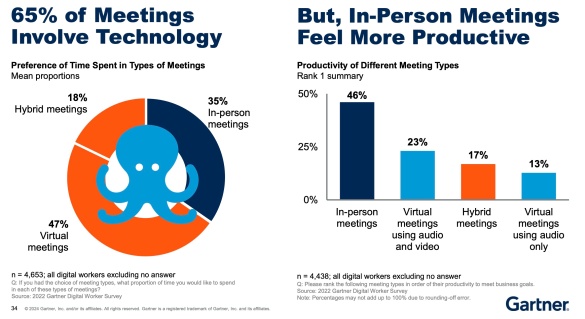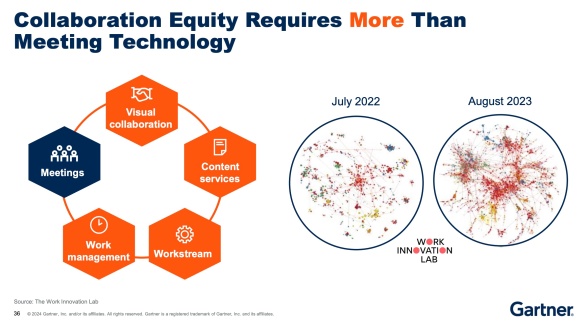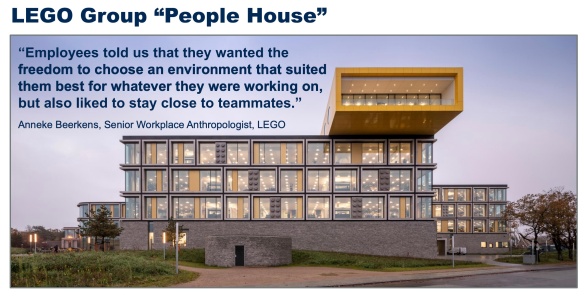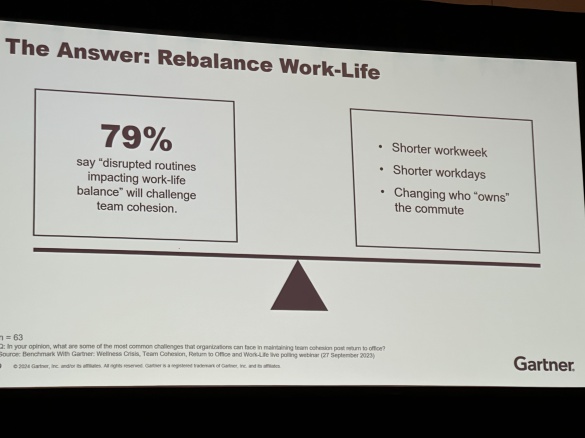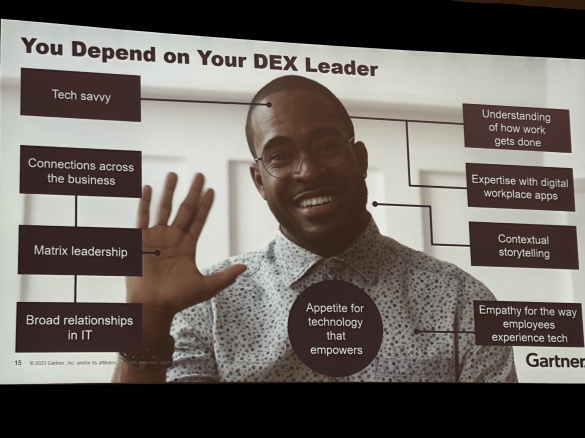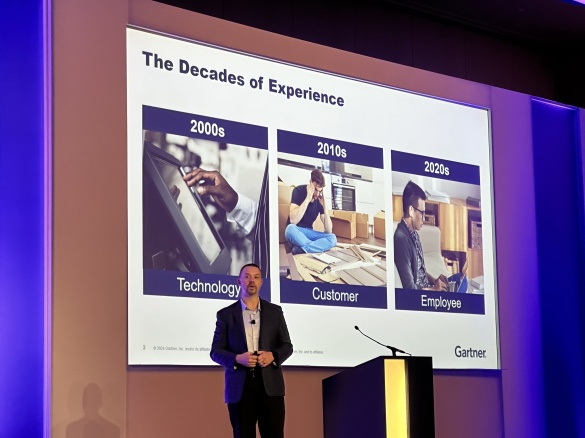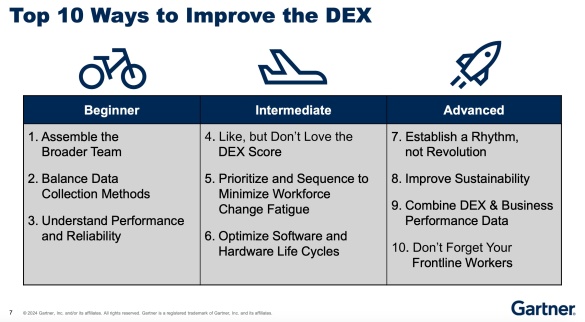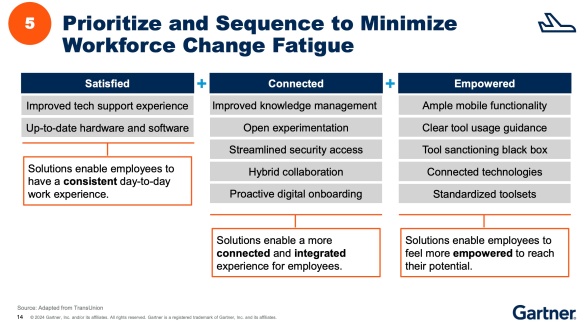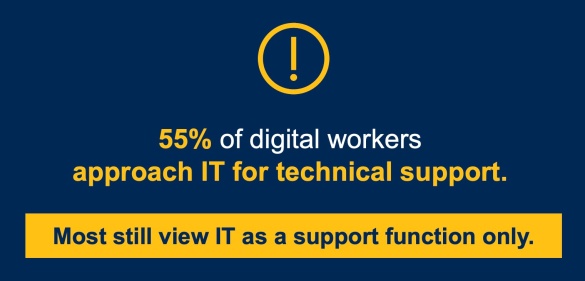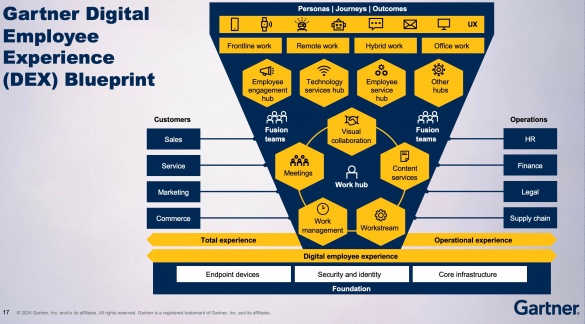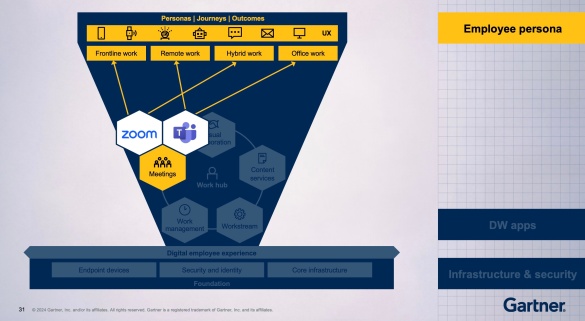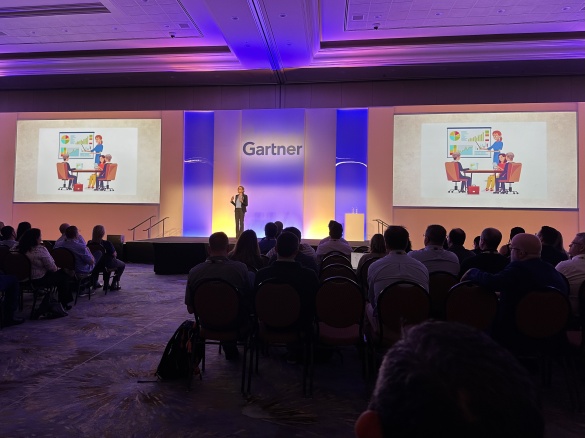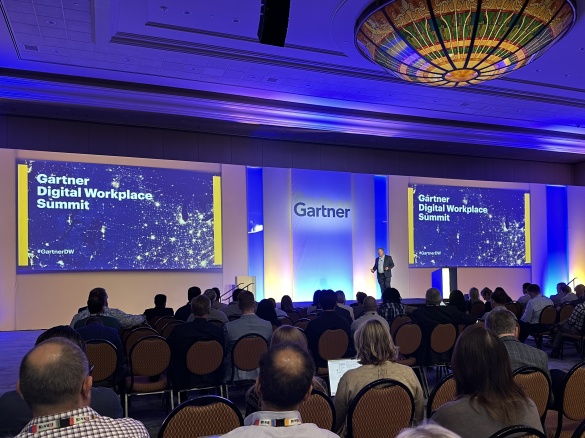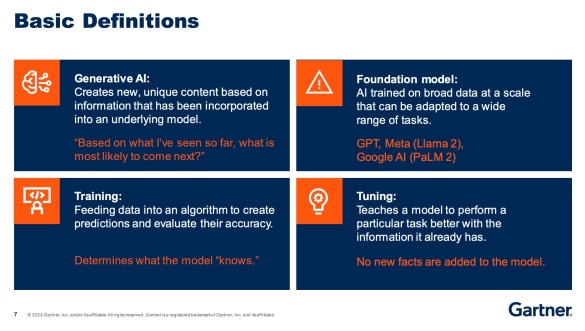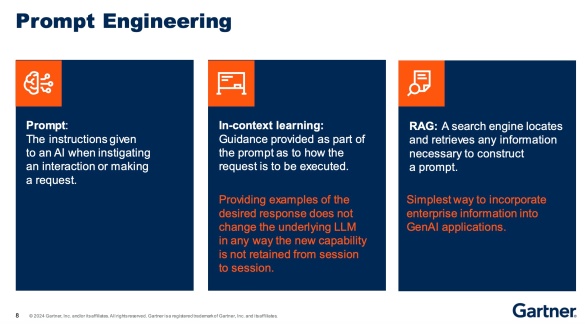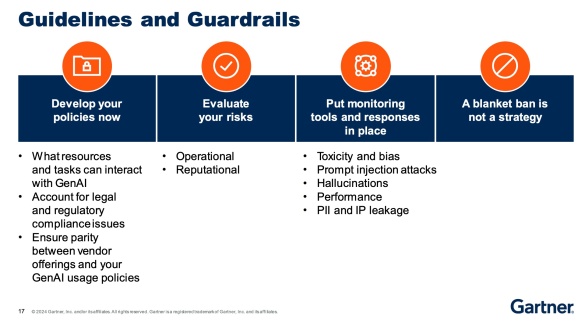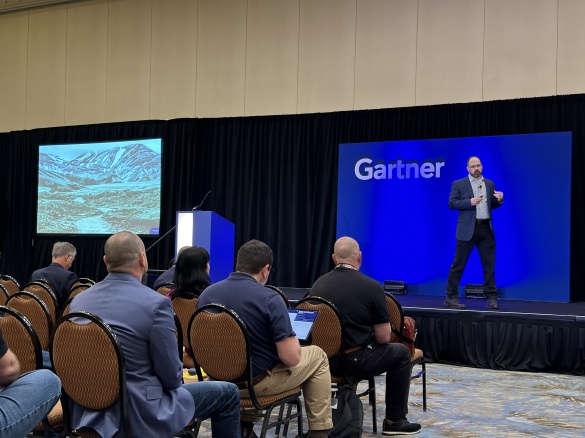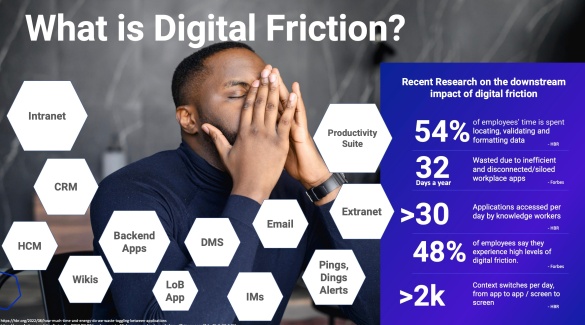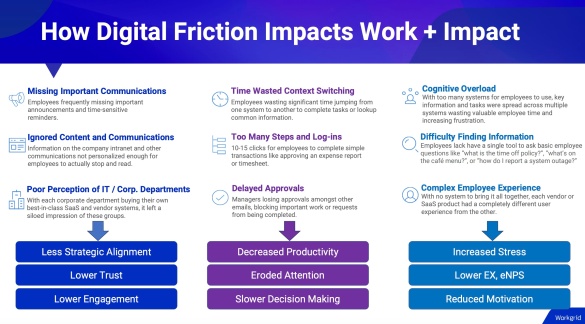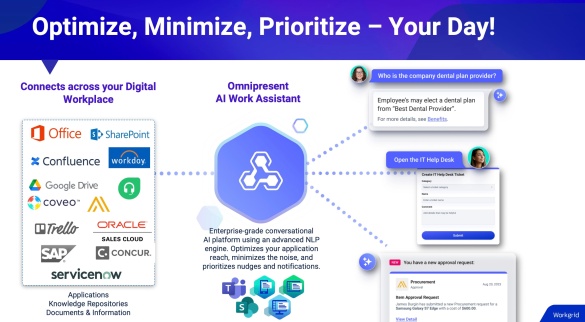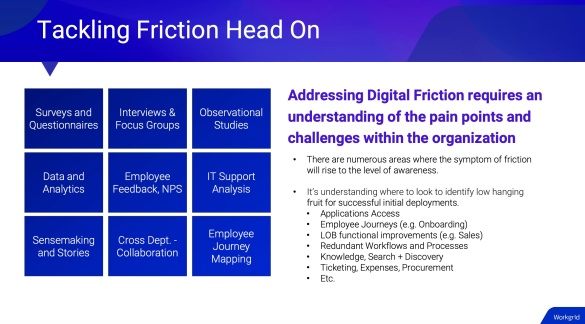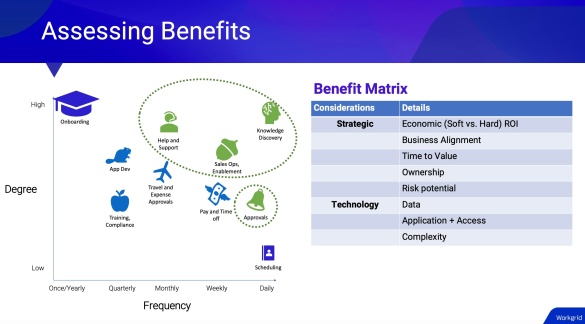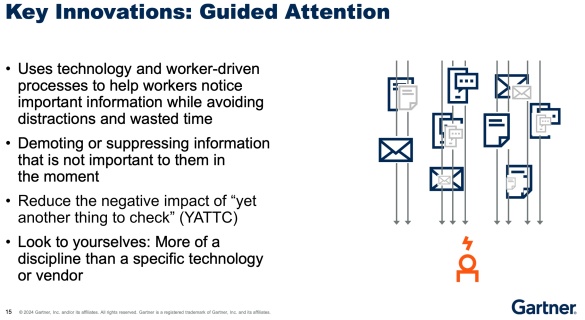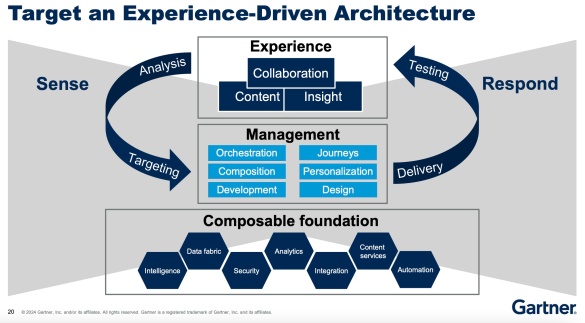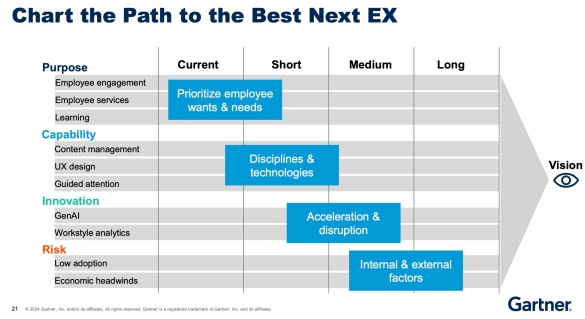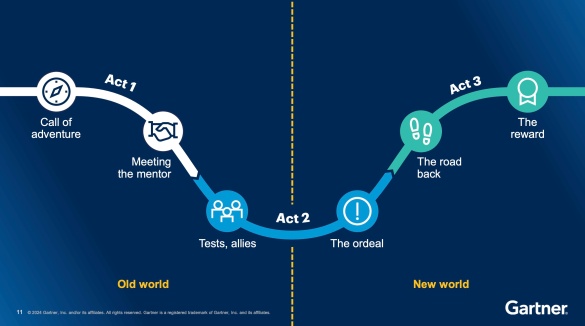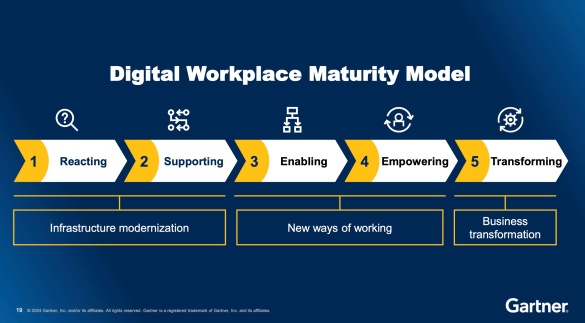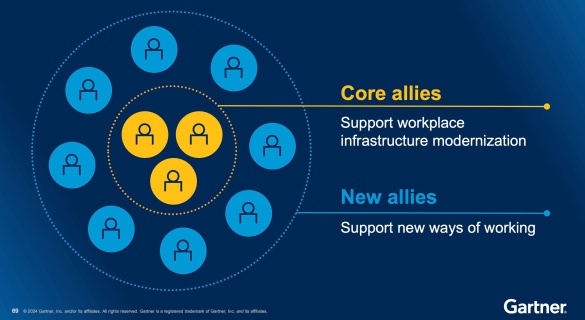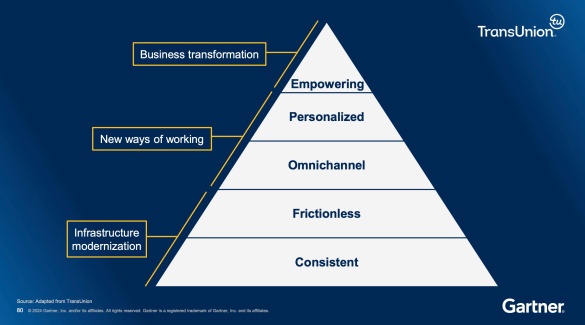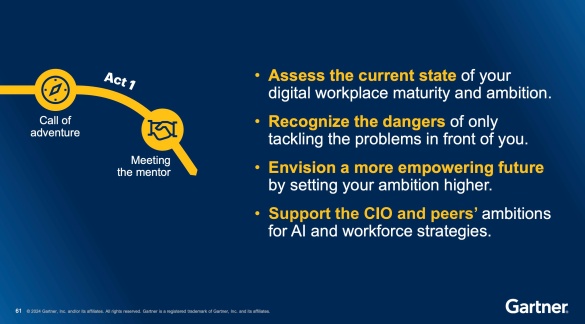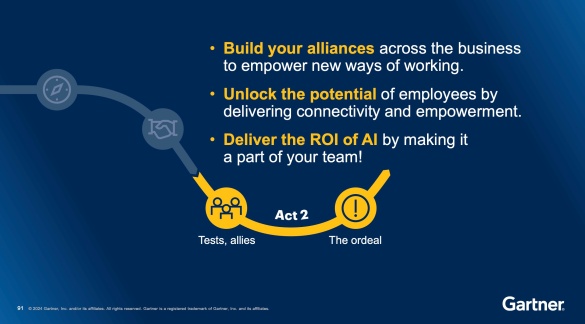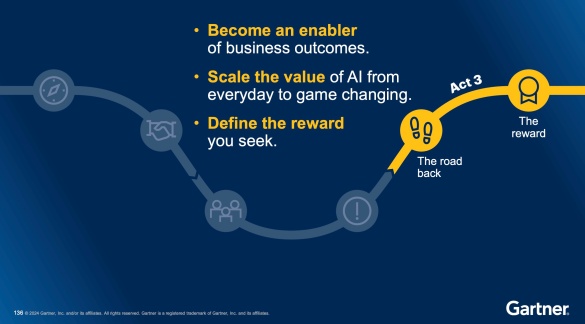Session Description: A compelling story about the relevance and value of your digital workplace program is crucial for securing executive support, engaging business stakeholders, and prioritizing investment decisions. In this session, we will discuss various ways to present a digital workplace value story, including relevant metrics that matter to the business. [slides]
Notes:
- The business value of digital workplace must be articulate through its impact not just the effort.
- Impact is key – to maximize budget, technology spend and outcomes maximized.
- Value for “run” and “change” stories.
- Information needed and linked to business value include the: WHAT (facts) > SO WHAT (why care) > NOW WHAT (what do we do about it – freedom to experiment).
- Need to focus on what leaders MOST CARE ABOUT!
- Key areas to zero in on: 1) “Transform our ways of working, talent strategies, external partnerships.”, 2) digital dexterity, and 3) digital workplace.
- Primary value drivers: 1) cost savings, 2) risk reduction, 3) revenue growth, bonus) environmental social/corporate governance
- Don’t do just devices and help desks as an IT unit. There is much more to the value proposition.
- Technology initiatives (IT ops) > business outcomes (metrics) > primary value drivers (employee net promoter score)
- RUN stories include links to business outcomes that matter to business leaders:
- CHANGE value stories provide connection to drive business transformation:
- Move IT to a leader of employee digital enablement, not just technology support or the hardware/software “deliverer”.
- Good metrics to highlight (information > insight > action):
- 1. Influences decision making.
- 2. Is relevant to a specific stakeholder.
- 3. Focuses on business outcomes.
- 4. Provides a leading indicator. 5. Drives action.
- Key recommendations and next steps:
- Create stakeholder value story narratives that link digital workplace initiatives to relevant business outcomes.
- Pitch the value story narratives to your maturity level and ambition in order to make it believable.
- Identify, analyze and validate business priorities from the perspective of key stakeholders.
- Keep the conversation “evergreen” with a forum that engages stakeholders and identifies, priorities, business outcomes and metrics.
